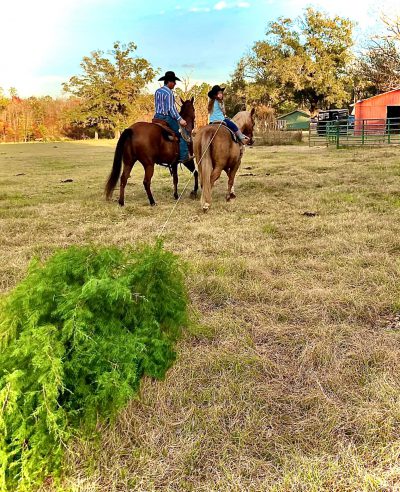There is something special about the tradition of a live Christmas tree. For many families the tradition of cutting and decorating the live tree is the prefect start to the holidays. But after you are done decking the halls and hanging the tinsel, most of the 13 million Americans who have a live Christmas tree all find themselves asking the question, “What to do with the tree after Christmas?”. There is the ever-popular bonfire, while exciting, it burns in seconds and the excitement is over, so why not allow your Christmas tree to continue to give back all year round?
Did you know that Christmas trees make great habitat for fishponds? By sinking the tree into the depths of your fishpond you can increase the complexity of the aquatic habitat. The woody debris provides a place for aquatic macroinvertebrates to live. In addition, increasing and improving the habitat availability of your fishpond will increase the health and diversity of your pond. Over time your tree will begin to be the host to new vegetation which will attract small insects, snails, and crawfish. This is a buffet for bait fish and in turn will also attract larger predator species for you to catch. While the needles of the tree will likely be gone in about three months, some trees have been found in ponds up to ten years later.
–
Here are the steps for recycling your tree:
- Remove all ornaments, tinsel, and other manmade products from the tree (do not use artificial trees).
- Place a weight of some type of the trunk of the tree. This can be done by adding cement to the trunk of the tree in a 5-gallon bucket or attaching some other weighted item such as a cinder block. This should be attached with wire, as most ropes will deteriorate over time.
- Ideally the tree is placed upright in an area of the pond that is deep enough to cover the entire tree, when upright. Keep in mind that water levels will change throughout year, and you want to place the tree somewhere it will be submerged all year.
- When picking your location remember that placing the tree in areas of the pond with limited bottom habitat will increase its effectiveness. If you have a fish finder, use it to determine the areas of your pond that are lacking bottom cover.
- Ideally, over the years you will place trees in a clustered area. This tends to be more effective at attracting fish than a single tree.
For every avid fisherman, recycling your Christmas tree is truly a gift that will keep on giving. While the holidays seem to fly by, your sunken tree will provide improved habitat for the fish in your pond for years to come, as it serves as a support structure for your aquatic food chain. That’s something even ole’ Saint Nick would be excited about!
*IMPORTANT INFORMATION: this should only be done in privately owned ponds. Before adding anything to public waters you should contact your local Florida Fish and Wildlife Conservation Commission officer.
–
For more information on fish attractants visit FWC website at: FWC Fish Attractors
- Big Doe Contest Returns for 2025: A Growing Thanksgiving Tradition - November 14, 2025
- UF/IFAS Extension Panhandle Cattlemen’s College Announces Scholarship Opportunity for Florida Youth – Application Deadline September 15 - August 29, 2025
- Foot Rot Prevention and Treatment for Cattle - August 15, 2025

